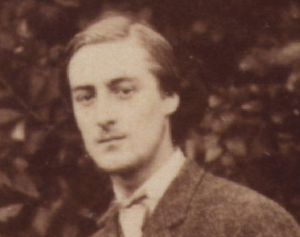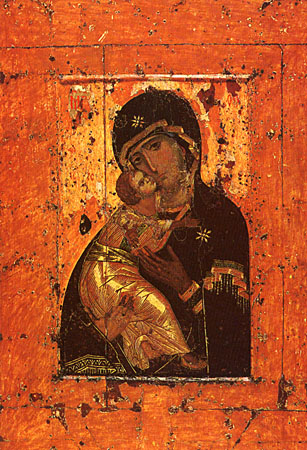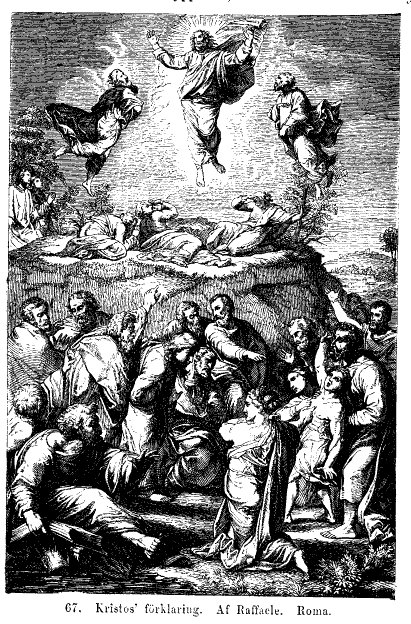Dear reader.
I have compiled a reading schedule for the wreck of Deutschland with comments.
It is based on the 40 days of lent. Sundays and days of feast is not in the schedule. However I will try to find texts that might be interesting concerning Hopkins for those day as well.
I’m very glad that these comments still are of interest to some. I’m sorry for my sometimes slightly broken English. Feedback is appreciated!
Have a miserable lent everyone! 😉

Days of Lent 2015
- 1st day of lent (Wednesday) 18/2 – Ash Wednesday
https://swede1875.wordpress.com/2008/02/07/1-i-feel-thy-finger/ - 2nd day of lent (Thursday) 19/2
https://swede1875.wordpress.com/2008/02/07/2-the-inner-storm-and-sprung-rhythm/ - 3rd day of lent (Friday) 20/2
https://swede1875.wordpress.com/2008/02/08/3-catholic-conversion/ - 4th day of lent (Saturday) 21/1
https://swede1875.wordpress.com/2008/02/11/4-like-water-to-a-poise/
1st Sunday of Lent 22/2
Interludium: https://swede1875.wordpress.com/2007/04/19/as-kingfishers-catch-fire/
- 5th day of lent (Monday) 23/2
https://swede1875.wordpress.com/2008/02/12/5-how-to-respond-to-nature/ - 6th day of lent (Tuesday) 24/2
https://swede1875.wordpress.com/2008/02/13/6-the-most-demanding-revelation/ - 7th day of Lent (Wednesday) 25/2
https://swede1875.wordpress.com/2008/02/18/7-to-the-cause-of-man/
- 8th day of lent (Thursday) 26/2
https://swede1875.wordpress.com/2008/02/18/8-redemptive-grace/ - 9th day of lent (Friday) 27/2
https://swede1875.wordpress.com/2008/02/20/9-an-concluding-prayer/ - 10th day of lent (Saturday) 28/2
https://swede1875.wordpress.com/2008/02/21/10-convert-them-all/
2nd Sunday of lent 1/3
Interludium: https://swede1875.wordpress.com/2007/04/20/a-pale-young-boy/
- 11th day of lent (Monday) 2/3
https://swede1875.wordpress.com/2008/02/22/11-the-harvest-of-death/ - 12th day of lent (Tuesday) 3/3
https://swede1875.wordpress.com/2008/02/24/12-a-steamship-heading-for-america/ - 13th day of Lent (Wednesday) 4/3
https://swede1875.wordpress.com/2008/02/25/13-force-ten-gale/ - 14th day of lent (Thursday) 5/3
https://swede1875.wordpress.com/2008/02/26/14-steam-single-screw-11-knots/ - 15th day of lent (Friday) 6/3
https://swede1875.wordpress.com/2008/02/27/15-long-gone-hope/ - 16th day of lent (Saturday) 7/3
https://swede1875.wordpress.com/2008/03/03/16-every-man-is-for-himself/
3rd Sunday of Lent 8/3
Interludium: https://swede1875.wordpress.com/2007/04/18/a-meeting-with-cardinal-john-henry-newman/
- 17th day of lent (Monday) 9/3
https://swede1875.wordpress.com/2008/03/04/17-daughters-of-the-sacred-hearts-of-jesus-and-mary/ - 18th day of lent (Tuesday) 10/3
https://swede1875.wordpress.com/2008/03/04/18-the-waters-of-the-sanctuary-and-the-heart-as-mediator/ - 19th day of Lent (Wednesday) 11/3
https://swede1875.wordpress.com/2008/03/06/19-a-sister-is-calling/ - 20st day of lent (Thursday) 12/3
https://swede1875.wordpress.com/2008/03/07/20/ - 21st day of lent (Friday) 13/3
https://swede1875.wordpress.com/2008/03/08/21/ - 22nd day of lent (Saturday) 14/3
https://swede1875.wordpress.com/2008/03/08/22/
4th Sunday of Lent 15/3
Laetare Sunday Interludium: https://swede1875.wordpress.com/2007/09/
- 23rd day of lent (Monday) 16/3
https://swede1875.wordpress.com/2008/03/10/23/ - 24th day of lent (Tuesday) 17/3
Feast of St Patrick - 25th day of Lent (Wednesday) 18/3
https://swede1875.wordpress.com/2008/03/11/24/ - 26th day of lent (Thursday) 19/3
Feast of St Joseph - 27th day of lent (Friday) 20/3
https://swede1875.wordpress.com/2008/03/12/25/ - 28th day of lent (Saturday) 21/3
https://swede1875.wordpress.com/2008/03/14/26/
5th Sunday of lent 22/3
Passion Sunday Interludium: https://swede1875.wordpress.com/2007/11/28/liberating-walls-and-narrow-spaces/
- 29th day of lent (Monday) 23/3
https://swede1875.wordpress.com/2008/03/15/27-the-dragon-of-the-sea/ - 30th day of lent (Tuesday) 24/3
https://swede1875.wordpress.com/2008/03/16/28/ - 31st day of lent (Wednesday) 25/3
The Annunciation of the Lord - 32nd day of lent (Thursday) 26/3
https://swede1875.wordpress.com/2008/03/17/29/ - 33rd day of lent (Friday) 27/3
https://swede1875.wordpress.com/2008/03/18/30-maria-immaculata/ - 34th day of lent (Saturday) 28/3
https://swede1875.wordpress.com/2008/03/22/31-the-grain-of-god/
6th Sunday of Lent 29/3
Palm Sunday Interludium: https://swede1875.wordpress.com/2007/07/31/contemplation-to-gain-love/
- 35th day of Lent (Monday) 30/3
https://swede1875.wordpress.com/2008/03/24/32-yore-flood/ - 36th day of lent (Tuesday) 31/3
https://swede1875.wordpress.com/2008/03/24/33-the-only-ark-of-salvation/ - 37th day of lent (Wednesday) ¼
https://swede1875.wordpress.com/2008/03/26/34-the-second-coming/ - 38th day of lent (Thursday) 2/4 – Holy Thursday
Stanza 35 (coming soon) - 39th day of lent (Friday) 3/4 – Good Friday
Concluding remarks (coming soon) - 40th day of lent (Saturday) 4/4
Holy Saturday
Easter week















